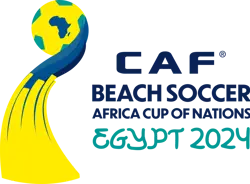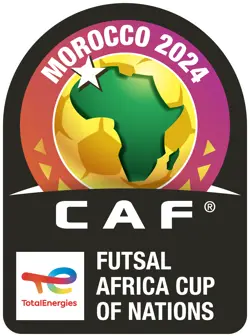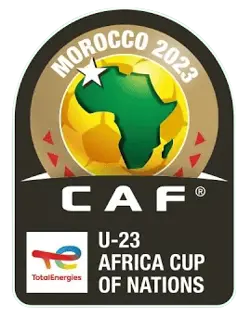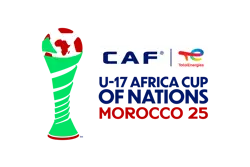Over the years, the competitions of the Confederation of African Football have evolved both quantitatively and qualitatively. From just one in 1957, after the establishment of the Confederation, there are 11 competitions in terms conventional football, which is played by teams of 11 players. Besides these, there are also Futsal and Beach Soccer championships.
Some of these competitions, especially the age categories, serve as qualification tournaments towards the FIFA World Cups.
CAF also plays an important role in the organisation of other competitions, which are not directly under its control, such as the African Games.
The popularity and success of CAF competitions, despite the financial situation and challenges facing the continent cannot be underestimated especially considering geographical factors, which manifest in varied ways, such as moving from one location to another and challenges of infrastructure. Such a progress can be attributed to the visionary leadership the organization has enjoyed over time.
1. Africa Cup of Nations (AFCON)
It is now ranked the third prestigious football competition across the world in terms of its cumulative TV audience, after the FIFA World Cup and the UEFA European Championship.
The Africa Cup of Nations holds every two years. The number of participants at the final phase which started from four, to eight, then 12. The final tournament was played with 16 teams from 1996 until 2017. From 2019, 24 teams participate in the final tournament.
The first edition was played in 1957 with four competing teams - Egypt, Sudan, Ethiopia and South Africa. The latter was disqualified due to the politics of racial segregation – known as apartheid that was going on in the country. In fact South Africa refused to send a multiracial team the competition, hence their exclusion from the maiden edition. The exclusion of South Africa saw Ethiopia qualify for the final with Egypt, who had beaten Sudan 2-1 in the first ever game in the history of the Africa Cup of Nations.
In the final, Egypt won 4-0 becoming the first team to be crowned African champions.
In 1962, the tournament was divided into two phases: the qualification phase and the finals phase. The qualification phase was played following a system of direct elimination, with away and return leg matches.
In 1992, the qualification phase was for the first time organized in a group stage format after an initial preliminary round involving the lower ranked teams. The number of participants, which was eight (8) in 1986, rose to 12 in 1992.
In 1996, the number of participants at the finals went from 12 to 16 with the return of South Africa into the family of African football, who also hosted that edition.
In 2019, the teams for the finals witnessed an increase to 24 teams with Egypt hosting the maiden edition of the new format.
The winner of the Africa Cup of Nations represents the continent at the FIFA Confederations Cup.
2. Africa Nations Championship (CHAN)
This competition, which the first edition took place in Cote d’Ivoire in 2009 is uniquely African. It features players who are playing in their domestic leagues. Players who based abroad, in or out of the continent, are not eligible to take part in the tournament.
From eight participants during the first edition, it moved directly to 16 at second edition in Sudan in 2011.
Since the third edition in 2014, the competition is recognized by FIFA, and it is considered in the FIFA World ranking process.
3. CAF Champions League
The CAF Champions League, formerly known as the African Cup of Champions Clubs, was started in 1964, and was played by teams that ended up as winners of the championships of Member Associations.
The present structure of the championship, having a direct eliminatory phase coupled with a group phase was started in 1997.
In 2004, CAF increased the representation by allowing the top 12 ranked Member Associations, based on the performance of clubs at interclub competitions, to have two representatives. In principle, the league winner and runner up.
The preliminary phase of the competition, divided into rounds is based on a direct elimination system, which is played on home and away matches. The winners of the last round of the preliminaries qualify to the group stage, with losers dropping to the second-tier CAF Confederation Cup.
From 1997 till 2016, the group stage had eight clubs. The number of participants soared to 16 clubs in 2017 with the introduction of quarter-final matches.
The winner represents Africa at the FIFA Club World Cup.
4. CAF Confederation Cup
The CAF Confederation Cup was born out of a merger of the African Cup Winners’ Cup created in 1975 and the CAF Cup launched in 1992. The Confederation Cup started in 2004 and brings together the winners of the national cups (FA Cups) of Member Associations.
Just like the CAF Champions League, the 12 top ranked Member Associations are eligible to enter two clubs, usually the winner of the domestic cup and the third placed team on the league log.
The preliminary phase of the competition, divided into rounds is based on a direct elimination system, which is played on home and away matches. The ultimate round of the preliminaries is a Play Off involving matches between the 16 losers from the 1/8th round of the CAF Champions League and the 1/8 th round winners of the CAF Confederation Cup for a place at the group stage.
The group stage had eight clubs from 2004 till 2016 before an increase to 16 clubs from the 2017 edition.
5. CAF Super Cup
Established in 1992, the CAF Super Cup is a one-off match between the winners of the CAF Champions League and CAF Confederation Cup. Usually, it is to be hosted by the winner of the CAF Champions League. However, CAF can also choose, for various reasons, to have the game played on the home grounds of the winner of the CAF Confederation Cup or a neutral ground in some cases.
6. U-23 Africa Cup of Nations
Considered the youngest of the CAF competitions family, it serves as the final qualifier for the Olympoc Games. It is held every four years and for players not more than 23 years. It was called U-23 Championship until the 2015 edition in Senegal which the competition renamed U-23 Africa Cup of Nations.
The first edition was played in December 2011 in Morocco with eight teams housed into two groups of four teams each. The top teams after round-robin matches at the group stage qualify to the semi-finals and eventually the final.
Based on the number of slots allotted the confederation, the representatives for the Olympics are determined accordingly based on the placement of the teams at the end of the competition.
7. U-20 Africa Cup of Nations
The U-20 Africa Cup of Nations is one of the age category competitions organized by CAF. It is meant for players under 20 years old by the date of the actual edition of the championship.
The first edition was in 1979, then christened Tessema Cup, and served as a continental qualifier for the FIFA World Youth Championship (now FIFA U-20 World Cup). Until 1989, it was played as a direct elimination tournament in away and return leg matches.
In 1991, CAF introduced a qualification format and a final phase that we played in a host country with eight teams under the name African Youth Championship.
It was renamed U-20 Africa Cup of Nations effective the 2017 edition in Zambia. From the 2021 edition, the number of teams for the final tournament will be 12 teams.
Held every two years, it also serves as the continental qualifier for the FIFA U-20 World Cup.
8. U-17 Africa Cup of Nations
From 1985 – 1993, there was no final tournament as it served as a qualifier for the then FIFA U-17 World Championship.
In 1995, CAF organized the first edition of the African U-17 Championship in Mali. The final tournament had eight teams.
It has grown to become one of the most sought after competitions on the African football calendar, having provided a platform for many players to cut their teeth to stardom.
Reserved for players not more 17 years, it was renamed U-17 Africa Cup of Nations in 2017.
Also, the continental qualifier for the FIFA U-17 World Cup, the final tournament will have 12 teams as of the 2021 edition.
9. Women’s Africa Cup of Nations
The Women’s Africa Cup of Nations was established by CAF in 1998. It is a biennial tournament and the major competition for women’s football on the continent. One edition in every four years serves as the qualifier for the FIFA Women’s World Cup.
The first edition of the tournament, then African Women’s Championship was hosted by Nigeria with eight teams.
As of 2020, the final tournament will have 12 teams in line with the vision to increase participation towards the development of women’s football on the continent.
10. FIFA U-20 Women’s World Cup & FIFA U-17 Women’s World Cup qualifiers
CAF organizes qualifiers for the final tournaments of the FIFA U-20 Women’s World Cup and FIFA U-17 Women’s World Cup.
Since 2001, CAF has supervised the qualification process for the two tournaments reserved for players with the stipulated age limits.
For the FIFA U-20 Women’s World Cup, two teams qualify whilst three represent the continent at the FIFA U-17 Women’s World Cup.
11. Futsal Africa Cup of Nations
Held every four years, it also serves as the continental qualifier for the FIFA Futsal World Cup. The final tournament has eight participating teams. Played indoors, it pits two teams of five players against each other.
The first edition was in 1996, then referred to as African Futsal Championship till 2008.
The 2016 edition in South Africa was the first under the renaming formula, Futsal Africa Cup of Nations.
12. Beach Soccer Africa Cup of Nations
The first edition, under the auspices of CAF was in 2015 in Seychelles. The next edition took place in 2016 in Nigeria.
After, the tournament became a two-year affair with Egypt hosting in 2018.
It also serves as the continental qualifier for the FIFA Beach Soccer World Cup.
13. African Games (Men & Women)
CAF supervises the football competition during the quadrennial multisport event, African Games.
Since its inception in 1965, the event was named All African Games and was organized under the auspices of the Supreme Council for Sport in Africa (SCSA).
Since 2015, it is referred to as African Games with the African Union as the main organizer in collaboration with the Association of National Olympic Committees of Africa (ANOCA) and the Association of African Sports Confederations (AASC).
The men’s competition has been organized since 1965, with the women’s in 2003. Usually, it features eight teams in both competitions.














